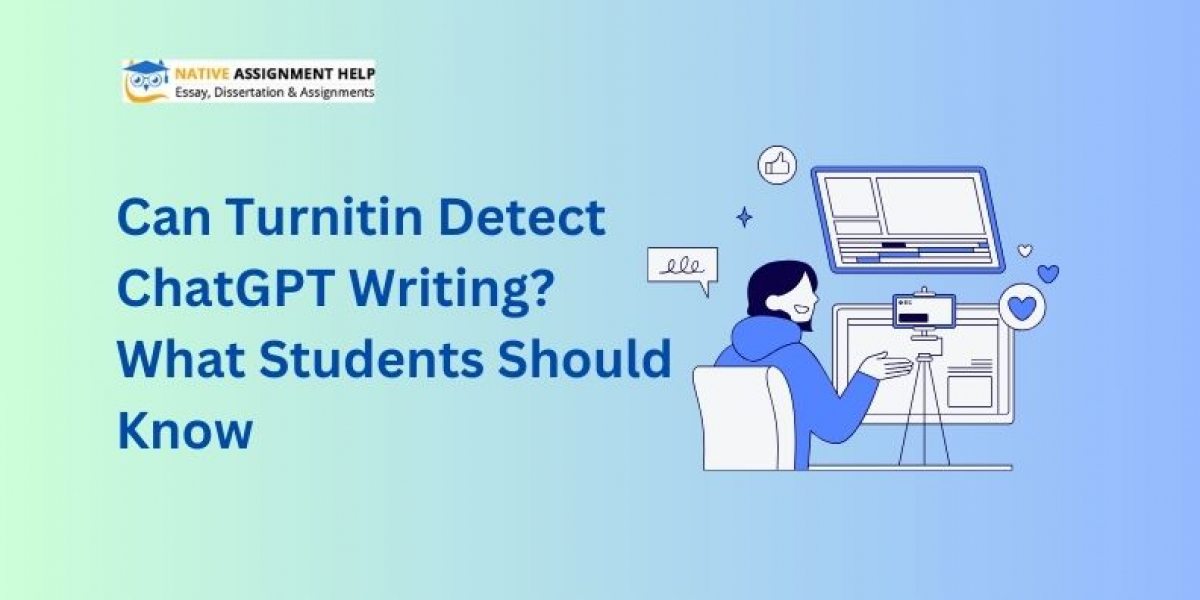Introduction
As artificial intelligence tools like ChatGPT become more popular, students are increasingly using them to assist with writing assignments. While this technology offers a range of benefits, it raises concerns about academic integrity. One of the biggest questions is: Can Turnitin detect ChatGPT writing? Understanding the relationship between AI-generated content and plagiarism detection tools like Turnitin is crucial for students looking to navigate the fine line between acceptable use and academic dishonesty.
How Turnitin Works: A Brief Overview
Turnitin is one of the most widely used plagiarism detection platforms in educational institutions worldwide. Its primary purpose is to compare student submissions against a massive database of academic papers, web content, and other student work to identify instances of potential plagiarism.
The software works by scanning the submitted document for similarities to existing texts in its database. It then generates a similarity report that highlights matches with previously published content. Turnitin doesn’t just detect direct copying; it also looks for paraphrasing and attempts to reword content without proper citation. However, detecting AI-generated content presents a unique challenge because the text produced by tools like ChatGPT may not match any existing source in the database.
Understanding AI-Generated Content
AI-generated content is written by machine learning models like ChatGPT, which are trained on vast amounts of text data from the internet. ChatGPT does not copy from any specific source but generates unique responses based on the prompts it receives. Because of this, the content produced by ChatGPT might not trigger traditional plagiarism detection methods, since it isn't pulled directly from an existing document.
However, this doesn’t necessarily mean that AI-written content is immune to detection. While ChatGPT produces original text, certain elements of AI writing—such as structure, phrasing, and vocabulary—can sometimes resemble content from other sources. This may result in a higher similarity score in Turnitin's reports, particularly if similar phrases or ideas are commonly used in publicly available data.
Turnitin’s AI Detection Capabilities
In response to the rise of AI-generated content, Turnitin has been working to improve its detection capabilities. Currently, Turnitin doesn’t have a tool specifically designed to detect whether a text was written by AI, but it has developed new algorithms to flag suspicious patterns in writing. These tools can analyze various linguistic features such as sentence complexity, tone, and writing style. If a piece of writing exhibits characteristics commonly associated with AI-generated content, Turnitin may flag it for further review.
One challenge in detecting AI-generated content is that it tends to be highly coherent and grammatically correct, which can make it difficult to distinguish from human-written work. However, some indicators, such as overly consistent sentence structure or lack of nuanced argumentation, can raise red flags. It’s important to note that while Turnitin’s technology is evolving, its ability to consistently detect AI-written text is still limited.
Common Indicators of AI Writing
While Turnitin detect ChatGPT writing is a possibility in some cases, there are specific features that can make AI-generated content stand out. These include:
- Repetitive phrases and ideas: AI tools like ChatGPT often use similar structures and phrases across multiple pieces of content, which may be flagged as suspicious by Turnitin.
- Overly formal or stilted language: AI-generated content may sometimes lack the natural tone and flow of human writing, especially in more creative or personal pieces of work.
- Lack of depth in analysis: AI tools can provide detailed responses, but they may struggle to deliver in-depth, critical thinking or original insights. In academic writing, this can lead to surface-level analysis that may be picked up by Turnitin’s evolving algorithms.
These characteristics aren’t foolproof indicators, but they offer clues for both students and educators to evaluate whether AI-generated content might have been used.
Ethical Considerations and Academic Integrity
The use of AI tools like ChatGPT in academic work raises important ethical questions. While students might view AI-generated content as a shortcut for completing assignments, it’s essential to consider the academic integrity policies of their institutions. Many universities and schools have strict rules against submitting work that isn’t the student’s own, and using AI tools without disclosure may violate these policies.
Even if Turnitin detect ChatGPT content isn’t flagged as traditional plagiarism, educators may still consider it an academic violation if the student passes off AI-generated work as their own. Students should also be aware that using AI tools without attribution could lead to disciplinary actions, including failing grades or more severe consequences, depending on the institution's policies.
Best Practices for Students
Given the potential risks, students should take several steps to ensure that they are using AI tools responsibly and ethically in their academic work.
- Consult with instructors: Before using ChatGPT or any AI tool, students should check with their instructors to understand the guidelines around using these technologies. Some educators may allow AI assistance for specific tasks, such as brainstorming, while others may prohibit it entirely.
- Cite AI use when applicable: If AI-generated content is used as a source of inspiration or a guide for writing, it’s important to properly cite it. Transparency about the use of tools like ChatGPT can help avoid misunderstandings and protect academic integrity.
- Avoid over-reliance on AI: While ChatGPT can be a helpful tool, students should avoid becoming too dependent on it for completing assignments. Writing is a skill that develops with practice, and overusing AI tools can prevent students from honing their own writing and critical thinking abilities.
- Review AI-generated content carefully: If students choose to use AI for any part of their writing process, they should thoroughly review and edit the generated text. This will help ensure that the content meets the assignment's requirements and reflects their personal understanding of the subject matter.
The Future of AI and Plagiarism Detection
As AI tools continue to improve, the challenge of detecting AI-generated content will grow. Turnitin and other plagiarism detection platforms will need to evolve to keep pace with these advancements. In the meantime, students should remain cautious when using tools like ChatGPT for academic work.
While Turnitin detect ChatGPT writing is currently an evolving capability, it’s clear that the use of AI in education is not going away. Balancing the benefits of AI tools with the need to maintain academic integrity is essential for students as they navigate this new technological landscape.
Conclusion
The rise of AI writing tools like ChatGPT has introduced both opportunities and challenges in education. While Turnitin may not yet be fully equipped to detect all instances of AI-generated content, it is developing tools to address this growing concern. As AI technology advances, students need to stay informed about the implications of using these tools and take steps to ensure their work aligns with academic standards and integrity policies.









